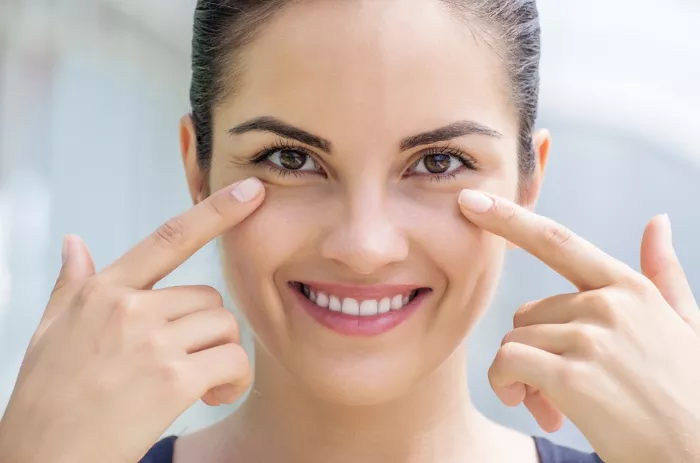Many people search for natural ways to improve their eyesight, leading to questions about the effectiveness of eye exercises. With increasing screen time and digital eye strain becoming more common, understanding whether these exercises work is more important than ever.
Understanding Eye Exercises and Their Purpose
Eye exercises are a series of movements and techniques designed to strengthen eye muscles, improve focus, and reduce strain. They’ve been used for centuries in various forms, from ancient yoga practices to modern vision therapy programs.
Common Types of Eye Exercises
Palming Technique
- Rub your hands together vigorously for 10-15 seconds to generate warmth
- Cup your palms over closed eyes without applying pressure
- Hold for 1-2 minutes while breathing deeply
Focus Shifting Exercises
- Hold a finger about 10 inches from your face
- Focus on the finger for 5 seconds
- Shift focus to a distant object (20+ feet away)
- Alternate back and forth 10 times
Eye Tracking Movements
- Follow a moving object (like a pen) with your eyes only
- Move the object slowly in all directions
- Perform for 1-2 minutes
Figure Eight Tracing
- Imagine a large figure eight about 10 feet in front of you
- Trace the shape slowly with your eyes
- Repeat 5 times in each direction
The Science Behind Eye Exercises
What Research Shows
Multiple studies have examined the effectiveness of eye exercises:
- A 2020 study in the Journal of Ophthalmology found that specific exercises improved convergence insufficiency in 75% of participants
- Research from the National Eye Institute shows exercises can reduce symptoms of digital eye strain by up to 50%
- However, a comprehensive review in Optometry and Vision Science concluded that exercises don’t change refractive errors
Conditions That May Benefit
Convergence Insufficiency
- Difficulty maintaining focus on near objects
- Exercises can strengthen eye teaming ability
Accommodative Dysfunction
- Problems with focusing flexibility
- Exercises may improve shifting between distances
Digital Eye Strain
- Discomfort from prolonged screen use
- Exercises help relax overworked eye muscles
Limitations of Eye Exercises
Refractive Errors
- Myopia (nearsightedness)
- Hyperopia (farsightedness)
- Astigmatism
Age-Related Conditions
- Presbyopia (after age 40)
- Cataracts
- Macular degeneration
Serious Eye Diseases
- Glaucoma
- Retinal disorders
- Corneal diseases
Step-by-Step Guide to Effective Eye Exercises
Morning Routine (5 minutes)
- Warm-up with gentle blinking (20 reps)
- Perform slow eye rolls (clockwise/counterclockwise)
- Practice near-far focusing (10 reps)
Midday Break (3 minutes)
- Implement the 20-20-20 rule
- Do seated palming
- Light massage around eye sockets
Evening Routine (7 minutes)
- Warm compress for 1 minute
- Figure-eight tracing
- Focus shifting with a pencil
- Final palming session
Integrating Exercises Into Daily Life
For Office Workers
- Set hourly reminders for mini exercise breaks
- Adjust workstation lighting to reduce glare
- Keep a small object (like a pen) for focus exercises
For Students
- Practice exercises between study sessions
- Use textbook margins for tracking exercises
- Implement the 20-20-20 rule during long study hours
For Seniors
- Focus on exercises that improve circulation
- Combine with gentle facial massage
- Consult an eye doctor before starting
Potential Risks and Precautions
Overexertion
Signs: Headaches, increased blurriness
Solution: Reduce intensity and frequency
Improper Technique
Common mistakes: Squinting, holding breath
Correction: Learn proper form from professionals
Ignoring Underlying Issues
Warning: Persistent symptoms need evaluation
Complementary Eye Health Practices
1. Nutrition for Eye Health
Essential Nutrients
- Lutein and zeaxanthin (leafy greens)
- Omega-3s (fatty fish)
- Vitamin A (carrots, sweet potatoes)
Hydration
Drink adequate water for tear production
2. Lifestyle Factors
Quality Sleep
7-8 hours for eye recovery
UV Protection
Wear sunglasses outdoors
Screen Habits
- Adjust brightness and contrast
- Use blue light filters when appropriate
When to Seek Professional Help
Red Flags
- Sudden vision changes
- Persistent pain or discomfort
- Double vision that doesn’t improve
- Loss of peripheral vision
Recommended Exam Schedule
Children: Every 1-2 years
Adults 18-60: Every 2 years
Seniors 60+: Annually
Tracking Your Progress
Subjective Measures
- Reduced eye fatigue
- Improved focus ability
- Less frequent headaches
Objective Measures
- Eye exam results
- Vision therapy assessments
Realistic Expectations
- Minor improvements may take 4-6 weeks
- Maximum benefits typically seen by 3 months
- Maintenance requires ongoing practice
Advanced Techniques for Specific Needs
1. For Computer Users
Computer Vision Syndrome Protocol
- Hourly microbreaks (20 seconds)
- Conscious blinking exercises
- Workspace ergonomics adjustments
2. For Athletes
Sports Vision Training
- Dynamic focus exercises
- Peripheral awareness drills
- Tracking moving objects
3. For Seniors
Age-Appropriate Exercises
- Contrast sensitivity training
- Low-light adaptation practice
- Depth perception maintenance
Conclusion
Remember that while eye exercises can be beneficial for certain conditions, they’re just one piece of eye health. Regular comprehensive eye exams remain essential for detecting and treating vision problems early.
Frequently Asked Questions
How long until I see results?
Most people notice reduced strain within 2-3 weeks, but functional improvements may take longer.
Can children benefit from eye exercises?
Yes, particularly for convergence issues, but always under professional guidance.
Are there apps that help?
Some vision therapy apps exist, but quality varies. Consult your eye doctor for recommendations.
Should I do these if I’ve had eye surgery?
Only with your surgeon’s approval, as timing and type of exercises matter.
Related topics:
Is There Surgery To Fix A Lazy Eye?
How Long Does It Take for Eyelid Surgery to Heal?


